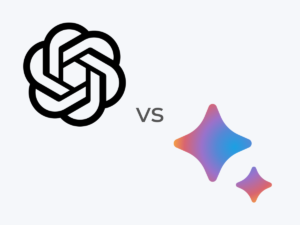Boomi and MuleSoft are two top iPaaS solutions. Which one is better for your company? Read this feature comparison of Boomi and MuleSoft to help you answer that question.

Many of today’s organizations operate in the cloud while retaining some on-premises infrastructure. Integration platform as a service providers help those companies integrate their data and applications on single platforms to streamline their operations.
Boomi — known as Dell Boomi before Dell Technologies sold it in 2021 — and MuleSoft are two top examples of iPaaS solutions in this space. Let’s compare the features of Boomi and MuleSoft to guide your decision-making process.
SEE: Hiring Kit: Cloud Engineer (TechRepublic Premium)
What is Boomi?
Boomi offers a low-code platform called AtomSphere that features a drag-and-drop visual user interface to facilitate data synchronization across cloud-based or physical locations. The platform allows users to create automated workflows to improve how people within an organization interact with data.
What is MuleSoft?
MuleSoft offers solutions to help companies integrate their data and devices, whether it exists in the cloud or in an on-premises infrastructure. The MuleSoft Anypoint Platform offers complete API management in a single platform. Besides enabling the performance monitoring of APIs used across an organization, MuleSoft allows people to apply security policies that dictate data access.
Head-to-head feature comparison: Boomi vs. MuleSoft
Integration features
Boomi’s data integration platform breaks down organizational silos and creates connections between data and devices regardless of their locations. A large library of prebuilt connector tools makes that process more efficient.
For example, if you use services such as AWS, Shopify or Marketo, Boomi has ready-to-use connectors that link those external services to the AtomSphere platform. Each connector contains all the necessary data to create the link.
Once you build an integration process or choose a connector, the deployment happens through a small dynamic runtime engine called the Atom, which enables centralized monitoring because it sends details of all real-time execution activity to the AtomSphere platform. People can either install the Atom locally or use a cloud-based version.
MuleSoft is like Boomi in that it offers a connector library that helps people use its platform with hundreds of other products. Users can improve their workflows by creating repeatable integrations that don’t require coding expertise.
In MuleSoft, the Mule is the runtime engine enabling the integration, and it works with on-premises, cloud and hybrid infrastructures. If people find that the available connectors don’t meet their needs, they can also use the Mule to make customizable modules.
User-friendliness
These iPaaS products both have numerous elements that make them simpler to use, regardless of a person’s level of tech-savviness.
The Boomi Suggest feature automates data mapping with algorithms and crowdsourcing. Together, those resources create a confidence level regarding which fields to map. There’s also the Filter Suggest feature, which automates aspects of connector configuration for better productivity.
Boomi’s crowdsourcing reliance is not just how it automates data mapping. The Boomi platform leverages collective input from other users to accelerate error message resolution. More specifically, a feature called Boomi Resolve automatically suggests likely ways to fix issues based on what other users have tried and recommended.
Then, Boomi Assure submits your integration processes and the associated data to the company to test it against future releases. This approach reduces the likelihood of updates causing unintended consequences.
MuleSoft also has an automated data mapping feature. However, there is no crowdsourcing component. People can accelerate their workflows even further by using the platform’s drag-and-drop capabilities and trying the integration templates.
In addition, MuleSoft includes the Teams feature, which lets administrators group people to reduce repetitive tasks. For example, people using Teams can define roles and then assign them to users with one click. The option to set global permissions is available as well. MuleSoft made the Teams feature an opt-in update, which means workplaces can start using it when ready and revert to older versions that don’t include Teams if desired.
Suitability for ETL
Some people on Boomi’s official user forum indicate they have used the platform to fulfill ETL needs, though its ETL features are not the primary focus. Boomi has a post on its corporate blog positioning iPaaS platforms as superior to ETL tools. That doesn’t mean Boomi won’t address your ETL requirements; however, it might not be easy to get support if you have questions.
Conversely, MuleSoft has specific guidance for people intending to use the Anypoint Platform for ETL. The company recommends using DataWeave, a purpose-built data integration solution. MuleSoft has a graphical data-mapping interface for improved usability, and it offers a browser-based flow designer that synchronizes data located in several siloed systems. Additionally, through its Anypoint Exchange hub, MuleSoft offers several ETL-related assets and tutorials to help people explore how to use the platform.
People who need robust ETL functionality in their iPaaS tool will likely be more satisfied with MuleSoft than Boomi. While MuleSoft actively caters to ETL users and provides instructional content to help, Boomi’s official content does not make suggestions about or assist people with using the platform for ETL purposes.
Pricing
Request pricing quotes and details about free-trial offers from the Boomi and MuleSoft sales teams to determine whether either of these iPaaS solutions fit your budget.
Which is the better iPaaS platform?
These two iPaaS products have many similarities, particularly regarding their integration features. The main differences between Boomi and MuleSoft exist within the specific functionality built to make system interactions easier and more productive for users.
Source of Article



